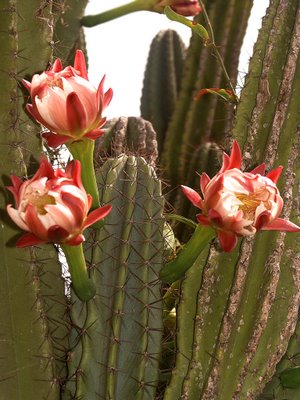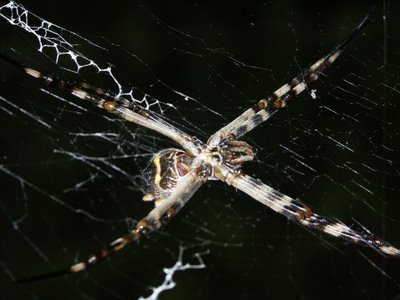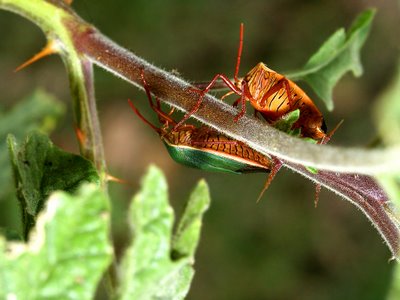

The seven species of water hyacinths comprise the genus Eichhornia of free-floating perennial aquatic plants native to subtropical South America which may rise some 1 metre in height. The leaves are 10-20 cm across, supported above the water surface by long, spongy and bulbous stalks. The feathery, freely hanging roots are purplish black. An erect stalk holds a single spike of 8-15 flowers, mostly lavender to pinkish in color with six petals. Since the plant has abundant nitrogen content, it can be used a substrate for biogas production and the sludge obtained from the biogas process can then be used as compost or fertilizer. It can also feed livestocks, such as cattle, sheep or chicken. However, due to easy accumulation of toxins, the plant is prone to get contaminated when used as feed.
Las siete especies de camalotes que comprenden el género Eichhornia son plantas acuáticas flotantes nativas de la zona subtropical de Sudamérica, las cuales pueden alzancar el metro de altura. Las hojas son alrededor de 10 a 20 cm de largo, apoyadas en la superficie del agua por tallos bulbosos y esponjosos. Sus raíces poseen apariencia plumosa de color negro y flotan libremente. Un tallo erecto sostiene una espiga de 8 a 15 flores de seis pétalos, mayoritariamente violetas y rosadas. Dado que la planta posee abundante contenido en nitrógeno, puede ser utilizada como substrato en la elaboración de biogas y de su subproducto se obtiene compost o fertilizante. Esta planta sirve también para alimentar ganado y aves. Sin embargo, debido a su tendencia a acumular toxinas del medio ambiente, puede llegar a contaminarse si se la usa para este fin.
Las siete especies de camalotes que comprenden el género Eichhornia son plantas acuáticas flotantes nativas de la zona subtropical de Sudamérica, las cuales pueden alzancar el metro de altura. Las hojas son alrededor de 10 a 20 cm de largo, apoyadas en la superficie del agua por tallos bulbosos y esponjosos. Sus raíces poseen apariencia plumosa de color negro y flotan libremente. Un tallo erecto sostiene una espiga de 8 a 15 flores de seis pétalos, mayoritariamente violetas y rosadas. Dado que la planta posee abundante contenido en nitrógeno, puede ser utilizada como substrato en la elaboración de biogas y de su subproducto se obtiene compost o fertilizante. Esta planta sirve también para alimentar ganado y aves. Sin embargo, debido a su tendencia a acumular toxinas del medio ambiente, puede llegar a contaminarse si se la usa para este fin.






